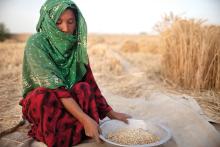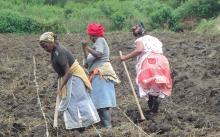Land Library
Bienvenido a la biblioteca de Land Portal. Explora nuestra amplia colección de recursos de acceso abierto (más de 74.000), que incluye informes, artículos de revistas científicas, trabajos de investigación, publicaciones revisadas por pares, documentos jurídicos, vídeos y mucho más.
/ library resources
Showing items 1 through 9 of 318.Le présent ouvrage s’inscrit dans le cadre d’un chantier de recherche mené avec le Comité technique « Foncier et développement » portant sur les processus de conve
À Madagascar, depuis 2005, la réforme foncière reconnaît légalement l’existence d’un régime de propriété privée non titrée (PPNT) aux côtés de la propriété privée titrée.
Throughout the Netherlands, land owners (or their lessees) use adjacent public or private land without any right. There is, however, no scientific empirical data on how often and where land is illegally used.
Soms bewust en soms onopgemerkt trekt iemand een stuk (gemeente)grond bij zijn tuin, onderhoudt dit jarenlang en behandelt het alsof het van hem is. Landjepik. Na twintig jaar verliest de originele eigenaar zijn eigendom en wordt de ‘dief ’ beloond voor zijn actie.
Landjepik, diefstal van land, gebeurt vaak in Nederland. Een huiseigenaar trekt bewust maar onopgemerkt een strook gemeentegrond bij zijn tuin of verplaatst het hek op het land van zijn buurman.
Land and associated property is a major source of individuals’ identity and livelihood.
It is widely accepted among economists and policy-makers that secure and well-defined land property rights are integral to poverty alleviation and economic prosperity. But how do legal systems, land tenure and economic development really relate to one another?
Access to land is key to achieving food security, poverty alleviation, social equity and environmental protection. A brief insight in land governance-related principles and policies of the German development assistance.
Following the end of apartheid, South Africa’s government set itself ambitious goals with a planned land reform. However, there have since been barely any changes in the country’s agricultural structure, and the positive impacts that were hoped for on rural livelihoods have hardly materialised.









